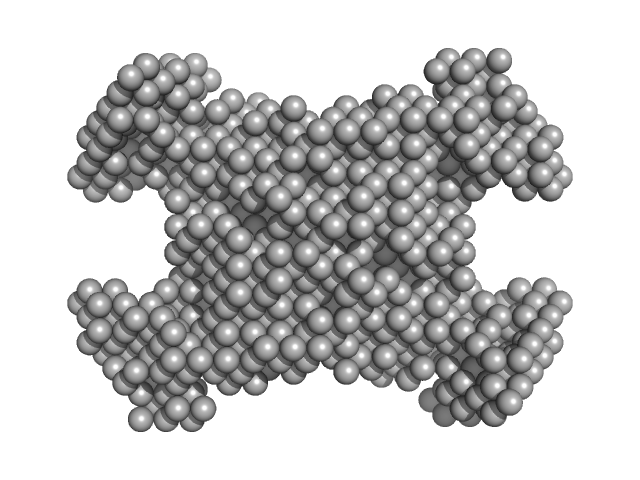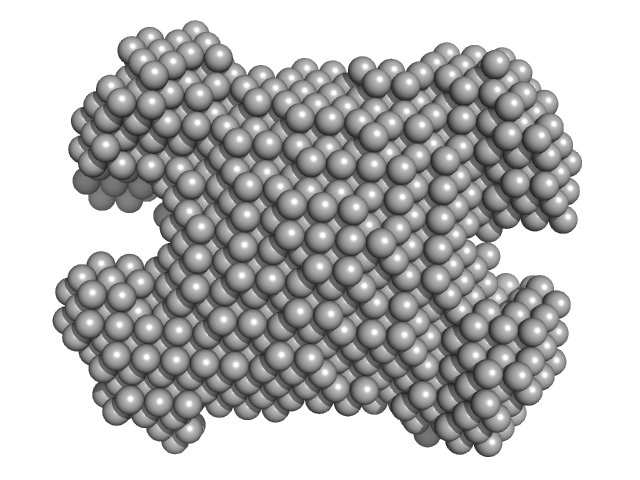| MWexperimental | 224 | kDa |
| MWexpected | 223 | kDa |
| VPorod | 336 | nm3 |
|
log I(s)
2.60×10-2
2.60×10-3
2.60×10-4
2.60×10-5
|
 s, nm-1
s, nm-1
|
|
|
|

|
|


|
|
Synchrotron SAXS
data from solutions of
Human phenylalanine hydroxylase (hPAH)
in
0.02 mM Hepes, 0.2 M NaCl,, pH 7
were collected
on the
B21 beam line
at the Diamond Light Source storage ring
(Didcot, UK)
using a Pilatus 2M detector
at a sample-detector distance of 4 m and
at a wavelength of λ = 0.1 nm
(I(s) vs s, where s = 4πsinθ/λ, and 2θ is the scattering angle).
In-line size-exclusion chromatography (SEC) SAS was employed. The SEC parameters were as follows: A 45.00 μl sample
at 12 mg/ml was injected at a 0.16 ml/min flow rate
onto a Shodex KW400 series column
at 20°C.
540 successive
3 second frames were collected.
The data were normalized to the intensity of the transmitted beam and radially averaged; the scattering of the solvent-blank was subtracted.
|
|
|||||||||||||||||||||||||||